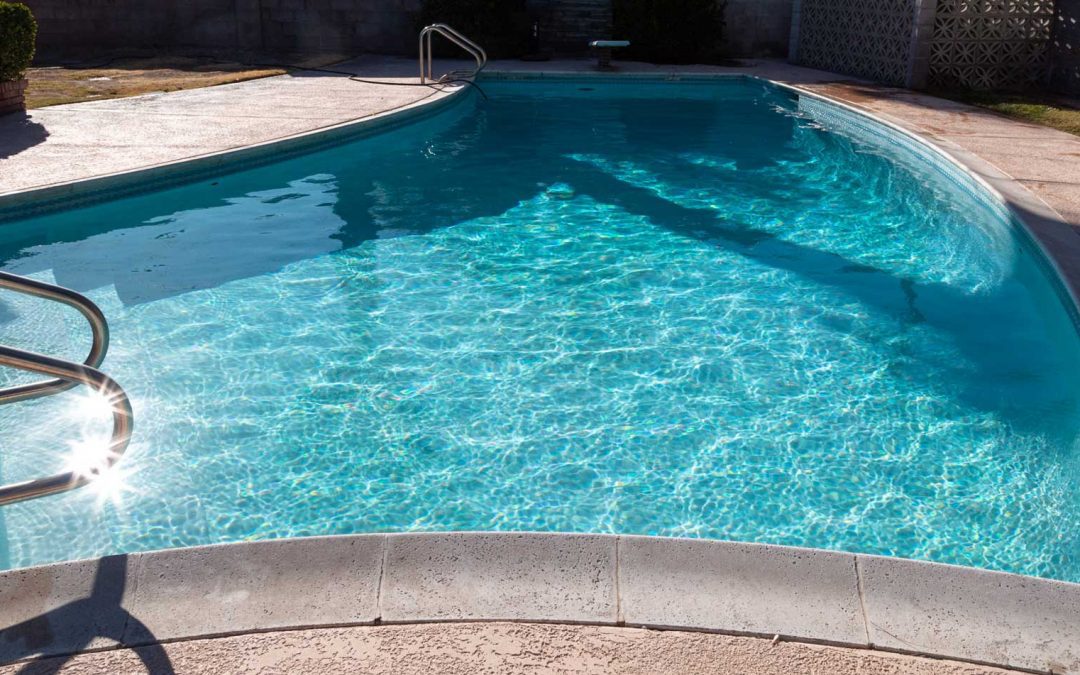Treating Algae In Swimming Pools
It is officially springtime in regards to our temperatures in Las Vegas and green pools become more and more common every day. You can find them in vacant homes, residential swimming pools, commercial pools, or in any pool that isn’t properly maintained. This also occurs in the springtime because homeowners forget to increase their chlorine levels and filtration run times. We think it is extremely important to tackle this issue in a variety of different ways so we hope this blog post gives you a better understanding of why this happens and all the different factors that go into turning that green pool blue again because now more than every keeping pools sanitary is extremely important! Typically, you will see a direct correlation to green algae-filled pools with a lack of chlorine or poor filtration. Whenever you have warm water, algae loves to grow and if you don’t have the proper amount of chlorine in the water, algae will grow rapidly! The same goes for filtration, if you’re not filtering your swimming pool long enough your chances for algae growth increase. The following are the most common issues for algae to grow:
- High phosphates
- High Cyanuric Acid (CYA/stabilizer) levels
- Lack of chlorine
- Minimal filtration times
Balancing Water Chemistry
When it comes to water chemistry, checking your phosphates regularly is important. Phosphates come from vegetation, soils, and fertilizers which are food for algae. When phosphate levels increase in the swimming pool they must be removed because no matter how much chlorine you use, algae will still grow. Typically, with high phosphates, you will need to purchase a phosphate remover and phosphate test kit if all your other chemistry levels are within normal ranges. Other factors could be high CYA levels. CYA helps reduce chlorine loss by protecting the free chlorine in the pool from the sun’s ultraviolet rays, reducing the amount of chlorine needed to maintain proper sanitizer levels. When these levels get too high, it lessens the effectiveness of chlorine to act as a disinfectant. Higher levels will bind with the chlorine, making it slower acting to kill bacteria and micro-organisms, and prevent algae from growing! This typically occurs because chlorine tabs have stabilizers in them. As a side note, the factor needed for Free Chlorine (FC) in relation to CYA is 0.75. This means if your CYA is 150 ppm you will need 11.25 ppm FC to combat algae. That is why optimal levels of CYA in your swimming pool should be between 30 – 50 ppm.
How To Treat Algae
When you’ve determined where the growth is coming from, City Wide Pool Service recommends the following steps to help remove the algae:
- Identify the type of algae
- Check chlorine, pH, and phosphate levels
- Check all pool equipment for leaks
- Check filtration equipment for tears in the filter grids or old sand
- Check run times for filtration (at this point you should be a minimum of 8 hours daily)
- Balance your water chemistry
If any of the above is the issue, the addition of more chlorine or increasing your filter run times should help because it is the two most common reasons why it occurs. Remember, clean it regularly and balance your water chemistry. If you do both of those, you should be able to keep your pool looking great. If you should have any questions, please contact us today!

